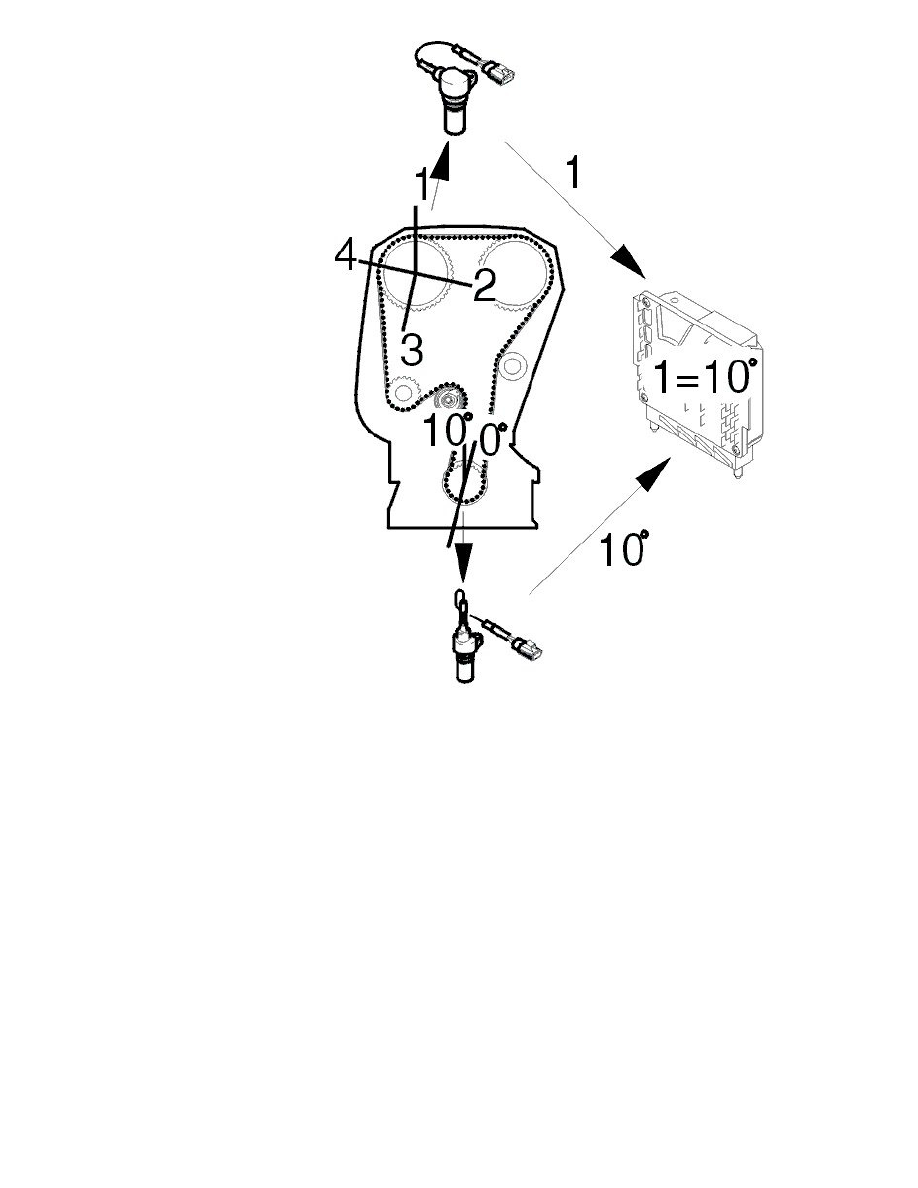XC70 L5-2.5L Turbo VIN 59 B5254T2 (2003)

The control module interpretation of camshaft shift angle
(The illustration shows the camshaft shift angle at 10°)
The camshaft shift angle is checked by the control module by comparing the position of the crankshaft with the position of the camshaft.
The camshaft (A) is divided into 4 flanks per camshaft rotation (flanks 1-4). The angles are: between flanks 1-2 = 103°, flanks 2-3 = 90°, flanks 3-4 = 90
° and flanks 4-1= 77°. The difference in angle between the flanks allows the control module to determine which flank is currently detected and therefore
which cycle the camshaft is in. The control module detects the flanks using the signal from the camshaft position (CMP) sensor.
The crankshaft has four reference positions, one for each camshaft flank. Two reference positions are detected for each crankshaft rotation. Two engine
rotations are required to detect all the camshaft flanks: flank 1 at 0°, flank 2 at 206°, flank 3 at 386° and flank 4 at 576° (flanks 3 and 4 are detected
during the second rotation of the engine).
The reference positions on the crankshaft correspond exactly to the respective camshaft flank when the camshaft shift angle = 0°. The control module
detects the reference positions for the camshaft flanks using the engine speed (RPM) sensor signal.
If, for example, the camshaft shift angle is +10°, the flanks correspond to the crankshaft reference positions for the respective camshaft flank and +10°
from the crankshaft reference positions.
Example:
If the camshaft flank 1 is detected at 10° from the crankshaft reference position for flank 1 (0° +10°), the camshaft shift angle is 10°. If the camshaft shift
angle is the same (10°), flank 2 is detected at 216° (206° + 10°), flank 3 at 396° (386° + 10°), and flank 4 at 576° (586° + 10°). The shift angle can be
positive (+) or negative (-) depending on whether the flank is detected before or after the different crankshaft reference positions.
